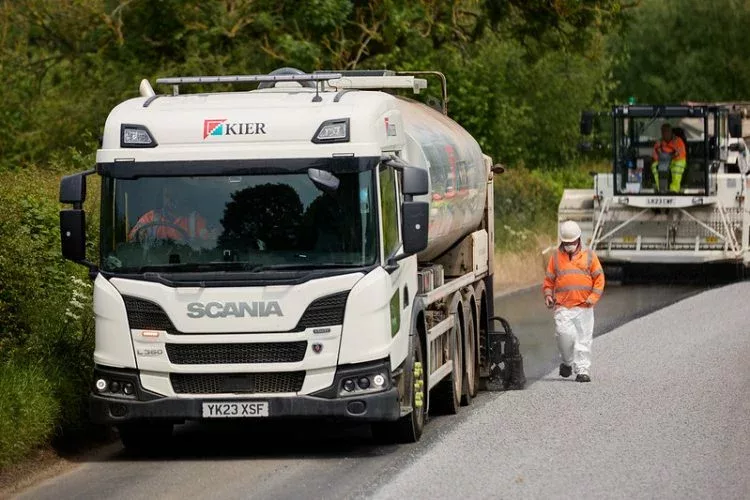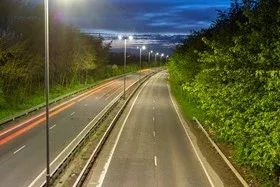More than 50 stretches of road across Shropshire have been treated this year as part of Shropshire Council’s annual surface dressing programme.
This year’s surface dressing programme began on 27 April, and ended on 1 August, with 55 roads treated.
In total, 80 miles of road have been dressed – the distance from Church Stretton to Cardiff as the crow flies – with 763,688m2 of road treated – the equivalent of 107 Wembley football pitches.
Surface dressing plays a key role in improving the county’s roads, and is a quick, efficient and cost-effective way of preventing potholes, maintaining skid-resistance and waterproofing road surfaces.
During this year’s programme 1.3m litres of bitumen were used, as well as 11,000 tonnes of chippings
The sites treated are located across the county and include all types of road, from urban cul-de-sacs to major ‘A’ and ‘B’ roads.
Surface dressing forms a major part of Shropshire Council’s annual road maintenance programme and is carried out alongside other preventative and reactive maintenance work.
The work is carried out by Kier, the council’s highways contractor.
Dan Morris, Shropshire Council’s Cabinet member for highways, said: “Surface dressing is a simple and highly cost-effective method of maintaining the road surface which can prevent much more expensive work being needed later, and it allows us to maintain a high-quality road network on a limited budget.
“I want to say thank you to all from Shropshire Council and our contractor Kier for successfully delivering this year’s surface dressing programme.
“As well as improving and protecting our roads, this important programme of work plays a crucial role in helping to prevent potholes and other defects forming in the future. Pothole treatment is very much about prevention as well as cure and this is one important way that we can aim to prevent potholes forming next winter.”
Ian Mclellan, general manager at Kier Transportation, said: “Surface dressing extends the life of roads by up to 15 years, and is more sustainable than resurfacing methods. The preventative road surface treatment is applied before roads are past the point of repair – and through this early intervention, we will have no doubt improved journeys for thousands of residents and road users for years to come.”





















